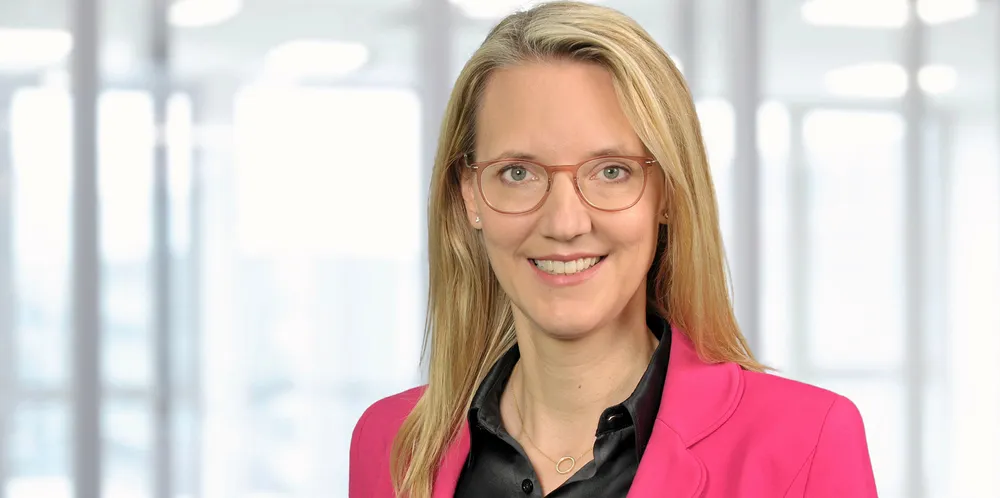RWE still wants to use gigawatt of troubled Siemens Gamesa wind turbine 'when it is ready'
Utility hopes to stick to framework agreement, says European chief Wünschel, as she also discusses turbine size and why Chinese machines don't immediately appeal in EU

“We don't have the 4.X nor the 5.X platform in our portfolio at this stage. So, therefore, we are not affected in our fleet. Our framework agreement covers both platform types,” Wünschel said in an interview ahead of the WindEurope 2024 event in Bilbao.
“The intention in our framework agreement was to use especially the new 5.X turbine. This was the platform we were looking into.”
RWE “really wanted” to use the 1GW of Siemens Gamesa turbines also to diversify its supplier base after so far having used many Nordex turbines and also working with Vestas and other OEMs, Wünschel said.
“Therefore, we are flexible and working closely together with the Siemens Gamesa engineering team on when this [5.X] turbine is ready, and for which project it will be suited,” she added.
“We are really looking forward to integrating the Siemens Gamesa 5.X into our portfolio with a diversified supply chain.
“Until then, we are flexible with other OEMs, because this is what we always have done.”
Local visibility
RWE normally studies project specifics to establish what turbine needs it has and which manufacturer it will order from, Wünschel said.
Asked whether this could also include Chinese manufacturers, which are pushing into European markets, Wünschel said that her company “at the moment” is primarily working with European OEMs, also to provide “local visibility” to residents close to wind farms.
“For onshore, local visibility is specifically important; that our wind farms that are standing next to the communities should be made in Germany, or wider Europe. It's creating jobs. And this is why, primarily, we really look into European manufacturers.”
RWE nevertheless is also paying attention to having enough competition in Europe, Wünschel added.
“We need the respective number of turbines available because every project is a bit different and has a project schedule in which it has to be realised – therefore, we need a variety of turbine manufactures.”
Size limits
For Central Europe, where the bulk of the continent’s wind farms are installed, 7MW turbines are currently “the limit” because of challenges in transporting ever longer blades in densely populated areas, Wünschel said.
“We really think that blade size (length) for onshore wind farms is nearly at the limit, mainly due to transportation limitations, and that the focus is really on keeping the quality of the blades high in the setup in which we at the moment use them,” she said.
“Transportation is one of the biggest challenges already,” Wünschel said, but also mentioned the size of the nacelle and tower segments as challenges.
“It is a big challenge when you need to transport it under bridges, over bridges … I don't see any significant opportunities to grow the length of blades. In Central Europe, France, Germany, Poland, the Netherlands, it is already really challenging [to transport blades].”
To get an idea of the size of components of some of the larger onshore wind turbines on offer, Siemens Gamesa's SG 7.0-170 model comes with a 170-metre-rotor diameter, while Nordex's N163/6.X features a rotor diameter of 164 metres. Blade lengths are about half of the rotor diameter.
Getting transportation permits alone is a big bureaucratic effort, Wünschel said, but she acknowledged that the US, China, Australia and the Nordics could be areas for larger turbines.
To keep a local European wind manufacturing supply chain, funding and financial instruments both on an EU and member state level is really important, she added.
“We should really be open to seeing how much Opex support is needed when it comes to the building up of a specific supply chain. It should be built up in a way to be able to compete with components that are coming from outside Europe into the market,” Wünschel said.
In onshore wind “you can do this via non-price criteria at tenders”.
Whichever criteria are to be added to tenders should be easy to administer and manage by the respective authorities, to avoid risking a slowdown in the build-up of renewables, she cautioned.
(Copyright)Recharge Live@WindEurope
Follow all the news, opinion and analysis from our team of journalists at WindEurope 2024 in Bilbao via Recharge's dedicated Live Centre.